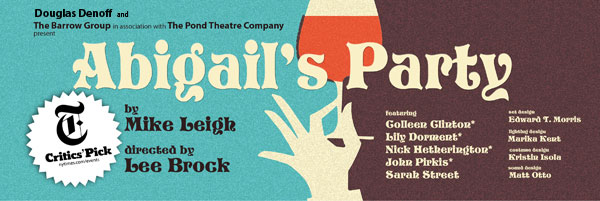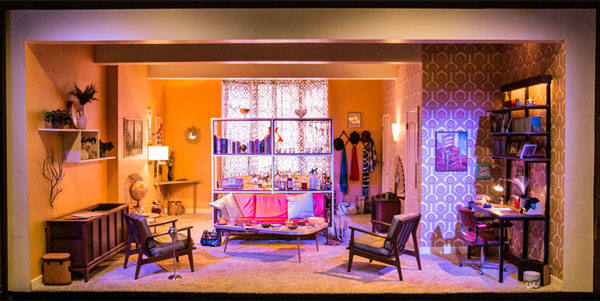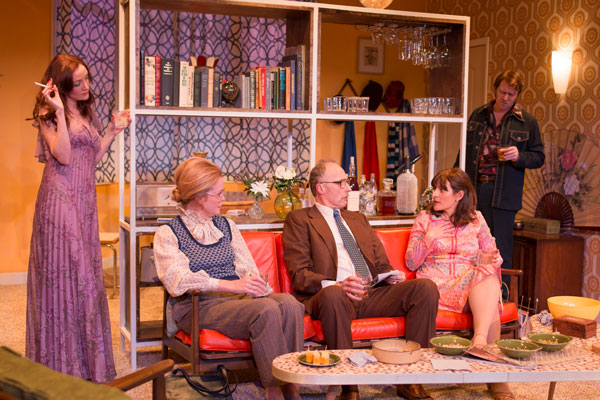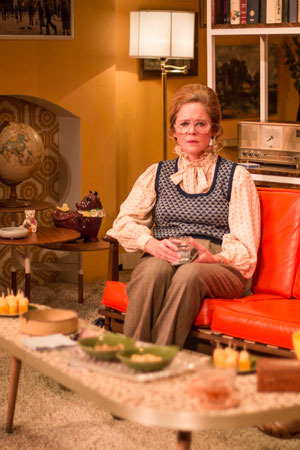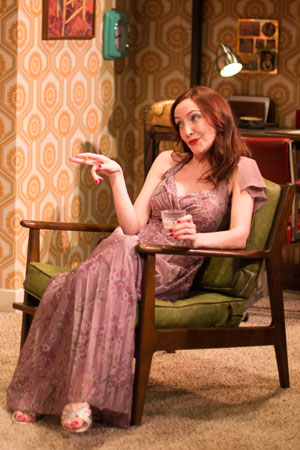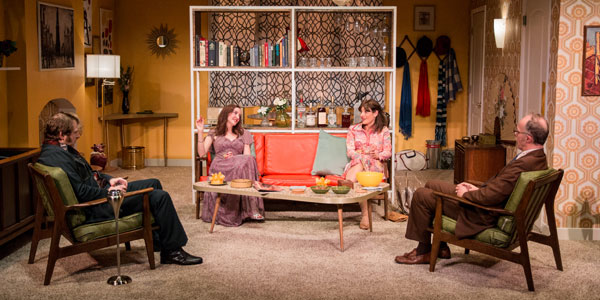| “Abigail’s Party” may be the most uncomfortable comedy in New York right now, and I’d sit through it again in a second. Here, humor and unpleasantness are intertwined, and that leads to laughs — many, many laughs — that are part gleeful and part appalled… a must-see.” ---The New York Times |
"the only downside to this
spectacular revival of British playwright Mike Leigh’s 1977 play is that the party ended too soon." |
Mike Leigh’s “Abigail’s Party” is a suburban situation comedy of manners, and a satire on the aspirations and tastes of the new middle class that emerged in Britain in the 1970s. The play captures epic denial in London suburbia and even though penned in 1977, Leigh points out, “It still hits a nerve about the way we live.” The play’s action takes place in Essex, a suburb of London, in 1977. Beverly and Laurence invite their new neighbors Angela and Tony over for a welcome drink. They are joined another neighbor, Sue, whose 16-year old daughter Abigail is having a party down the road. They drink throughout the evening and as they comically and tragically lose their guard, chaos ensues. Like so much of Mike Leigh’s brilliant work, this play reveals human frailties in a beautifully revealed, hilarious, and remarkably stirring way. Produced by The Barrow Group and The Pond Theatre Company in a sold-out run from November 12 to December 3, 2016, the play was directed by The Barrow Group's Co-Artistic Director, Lee Brock, and starred Lily Dorment, Colleen Clinton, Nick Hetherington, Sarah Street, and John Pirkis. It will return off-Broadway for a limited run in Fall, 2017 in anticipation of its Broadway 40th-anniversary debut. |
|
About Mike Leigh, playwright…
In 1965 he started to devise and direct his own plays, completing nine before the production of Bleak Moments at the Open Space Theatre in 1970. In the years between Bleak Moments and High Hopes (1988), his next fully-fledged cinema film, Leigh made nine feature-length television plays, as well as shorts and theatrical productions. Leigh encouraged actors to go beyond the naturalistic in their characterisations; desperate situations, masked by humour, are caught unflinchingly by dramatic lighting and an often static, but precisely positioned camera. The best-known of these television plays is Abigail’s Party, a quickly taped studio reconstruction of one of Leigh’s most successful stage works. Despite the fact that it was conceived for the stage rather than television, it became a comedic tour-de-force that impinged on the English national psyche.
|
